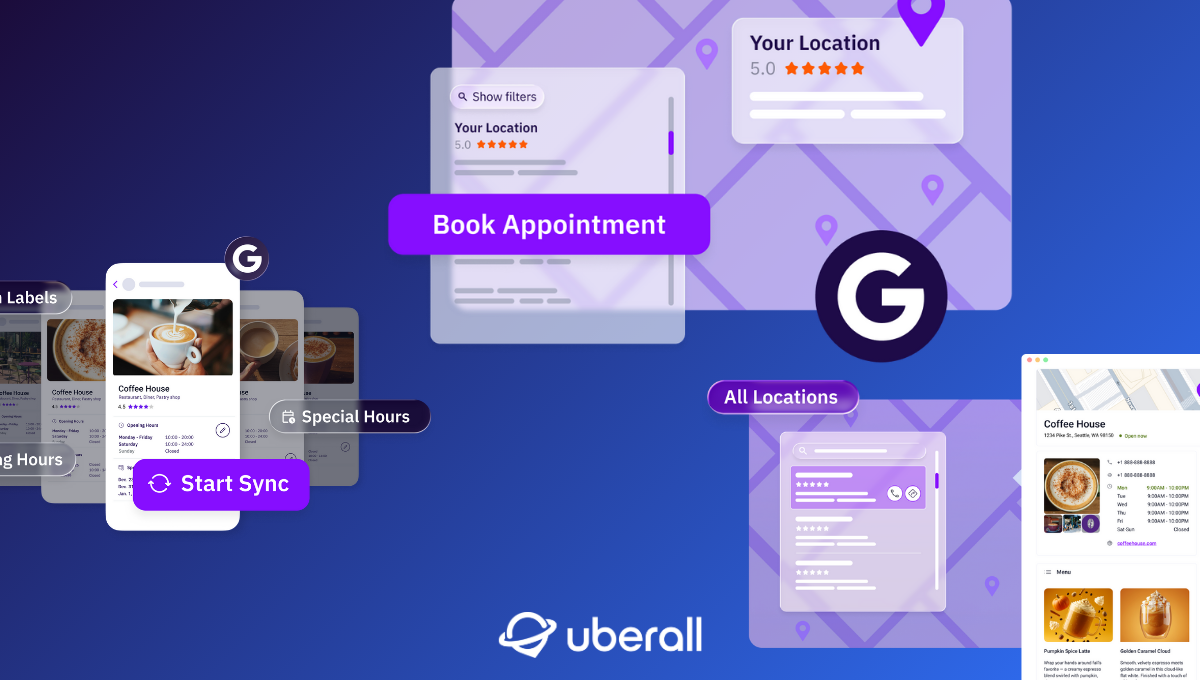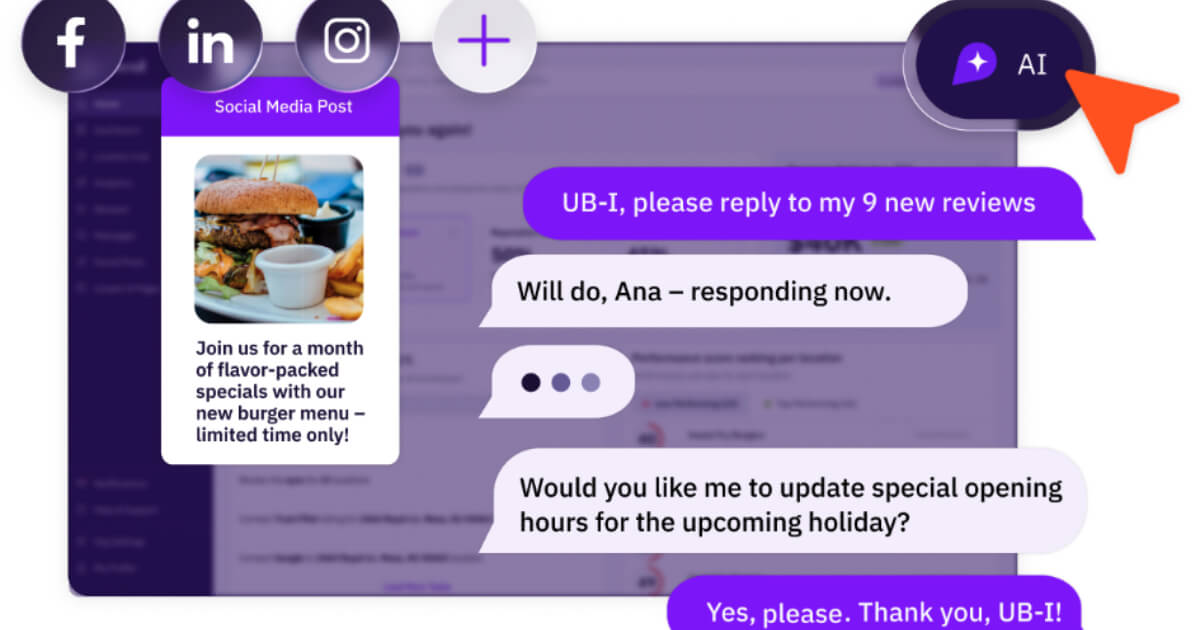
SEO for Food Delivery: How to Stand Out in Online Search
Combining convenience with time savings, food delivery is a booming market. Here’s how a targeted local SEO strategy can boost delivery at your restaurant.
We’ve all been there. Whether it’s been a long day at the office, or you’re simply having a cozy night in, sometimes having food delivered is too enticing to resist.
But while customers might know exactly what they want to eat, restaurants can struggle to make their voices heard. With so many competitors vying for customers’ attention online, standing out from the crowd takes a concerted effort.
The best way for restaurants to maximize their online visibility? Securing a prominent position on search engine results pages (SERPs), ideally breaking into Google’s Local 3-Pack – a prime position that captures the first and only click for 42% of users. Achieving that isn’t easy, though, and requires a laser focus on search engine optimization (SEO).
Why Bother Prioritizing SEO for Online Food Delivery?
Fueled in part by behavioral changes at the height of the COVID pandemic, consumers increasingly choose to order from restaurants online. In the USA alone, the meal delivery market generated $95 billion of revenue in 2024 – a four-fold increase on 2017 levels.
This explosive market growth speaks to fundamental changes in eating habits. Ordering food online for delivery to your door offers convenience, saves time, and can feel like an affordable treat at a time when consumers around the world face a cost-of-living squeeze.
Understandably, more and more restaurants are launching food delivery services in an effort to secure a piece of this lucrative pie. However, online food ordering platforms require a well-considered SEO strategy to boost a restaurant’s visibility, catch customers’ attention effectively, and drive them to order.
Delivery vs. Dine In: Differences in Focus for SEO
A key tenet of SEO is to optimize your online content so that your brand responds to users’ search intent. Search engines like Google examine your content, its quality, and its context, as part of their algorithms for determining whether that content effectively addresses user intent, rewarding effective content with prominent SERP rankings.
However, there are some clear differences in search intent between users looking to dine in and users hoping to place a food delivery order.
Dine-in users…
- Search for ambiance and experience (e.g., "romantic restaurants near me").
- Prioritize location and accessibility (e.g., "restaurants within walking distance").
- Consider menu variety and in-person specials (e.g., "brunch spots with live music").
- Often look for reviews on service and atmosphere.
Delivery users…
- Focus on speed and convenience (e.g., "fast food delivery now").
- Prioritize menu specifics and promotions (e.g., "pizza deals for delivery").
- Are concerned with delivery options and fees (e.g., "free delivery restaurants").
- More likely search on apps or platforms rather than directly on Google.
Hence, a local SEO strategy for food delivery should zero in on the main benefits of delivery services. Also, make sure to remove barriers – whether technical or content – that might prevent customers from finding exactly the details they want.
A Guide to the Components of SEO for Food Delivery
As experienced digital marketers will know, SEO is far from a one-off task. Instead, good SEO builds on constant innovation and adaptation in response to shifts in user behavior and changes to search engine algorithms.
SEO shouldn’t mean crowbarring keywords into your online content – far from it. Instead, it touches on a variety of related but distinct aspects of a company’s online presence. But let’s break down what effective SEO looks like for the food delivery sector.
Listings: Optimize Your Online Presence
Claim and maintain consistent listings across the most important online directories, updating them regularly with relevant and engaging content. Make sure your opening hours and contact details remain accurate across every site at all times, and upload high-quality photos of your restaurant and your food.
You should strive to claim listings on as many different sites as possible. While Google Business Profile, Apple Business Connect, and Yelp are among the major players, you should also prioritize hospitality-focused sites like Foursquare and Tripadvisor. A larger footprint increases your reach and establishes both authority and credibility, factors search engines reward with greater prominence.
Also, deploy tantalizing photos and videos of your food on your website, listings sites, and social media channels to get people’s stomachs rumbling.
Reviews: Leverage Word of Mouth
A healthy number of positive online reviews from satisfied customers obviously demonstrate credibility and authority, which Google et al reward with prominent placement in their search results. Negative reviews, however, can hurt a business’s online reputation and rankings if not addressed or managed effectively.
Maximizing the value of online reviews requires active input from restaurant owners. You should plan to actively solicit reviews from your customers, respond to every review, and defend your reputation vigorously by reporting fake or malicious reviews.
Community: Feed Your Network
User-generated content (UGC) remains the holy grail for digital marketers, with recommendations from various sources boosting your reputation without appearing pushy or overly direct. You should encourage satisfied customers to spread the word, perhaps be incentivizing them with a promotional offer.
Building your network with relevant content creators and authoritative media outlets also streamlines your channels for creating backlinks, further demonstrating your credibility to search engines. Consider collaborating on a series of Instagram reels with a local influencer or inviting media outlets and bloggers to tastings and events.
Content SEO: Use Keywords As Signposts
You should invest time in crafting content that gives readers a real flavor of your food you offer. By integrating impactful keywords into coherent copy, you can improve your chances of search engines ranking your site favorably – and by maintaining a consistent style and tone of voice, from your “About” section to your menu, you’ll project a sense of authenticity.
Local Keywords
Food delivery services operate with an inherently local focus. Restaurants and food outlets can take advantage of this by using relevant geo-targeted keywords, such as “best pizza in Brooklyn” or “takeaway fish and chips in London”.
Long-Tail Keywords
Incorporating long-tail keywords means you can respond directly to more specific user intent. However, this requires deeper research into what your customers want – and why. For example, customers seeking a “high-end sushi restaurant” might want an ultra-authentic experience, while “budget sushi locations” might draw better attention as a healthier option to fast food.
Remember, SEO is a two-way street: while search engine algorithms continue to adapt, user behavior also adapts to the latest trends. In the context of food delivery, that includes lifestyle and wellness trends. Monitor developments to see whether you can capitalize on trends in nutrition as they take shape, like “low-carb” or “high-protein”, and integrate corresponding keywords.
Technical SEO: Ensuring Flawless Functionality
Given the importance of convenience in the context of food delivery services, your website needs to be fully functional and provide a seamless user experience. That means fast load times, no broken links, clear structure, and an easy-to-navigate design. Use tools like Google PageSpeed Insights and backlink checkers to fine-tune these technical aspects.
Since a growing proportion of food delivery orders are placed via mobile devices, your website needs to function equally well on desktop and mobile platforms. Any limitations to mobile compatibility could convince a discerning or time-strapped user to take their business elsewhere.
Likewise, set aside some time for schema markup – a structured data format that enables search engines to parse key elements of website content more accurately, such as your location, business type, and customer reviews.
Applying SEO to Your Online Menu
While preparing delicious food is fundamental to the success of your restaurant, optimizing your menu for online search is essential for delivery services.
- Choose a machine-readable format: For eateries with a strong focus on delivery services, uploading your menu in a suitable format is key. Search engines need to be able to crawl your content as quickly and comprehensively as possible.
- Provide a seamless customer experience: Ensure your website is well structured, easy to use, and technically flawless. Eliminating hiccups reduces the risk of customers abandoning their order.
- Craft compelling copy with keywords: Your menu should be integrating evocative descriptors and keywords that rank highly in search engine results, respond to user intent, and remove any doubts about customers’ food choices.
- Create impactful, high-quality images: Supplementing your online delivery menu with mouthwatering photos often improves conversions. Particularly for restaurants, Google is now featuring more images in search results, also showcasing the recency of photos that can further improve your ranking.
- Use relevant categories and attributes: Choosing categories like "Italian Restaurant" and attributes like "Online Ordering" helps Google match your restaurant with relevant delivery searches. Same goes for predefined terms for menu items and services whenever possible.
- Manage third-party integrations: Google pulls data from services like DoorDash, meaning your menu info from these platforms may appear on your GBP. Hence, you need to make sure that available data is always up-to-date.
If you prefer customers to order directly, request Google to remove third-party integrations. Ensure your direct ordering system is integrated with your Google Business Profile via API, as Google favors profiles with seamless integrations.
A Holistic Approach to Restaurant SEO
From listings and reviews to keywords, social media, and website design, optimizing your restaurant’s online presence requires a considered, systematic approach in order to cover your bases.
If you want to see your restaurant at the top of hungry locals’ wishlists, consider deploying intelligent tools and AI-powered assistants from an integrated platform. Uberall’s single, centralized solution enables you to manage profiles, reviews, and listings across hundreds of sites and channels in one place – cutting complexity while optimizing your online visibility.
Interested in learning more? Book a free consultation!
Ready to Transform Your Business?
Connect with our partnership team to learn how Uberall can help you achieve similar results. Get a personalized consultation and discover the opportunities waiting for your business.
Resources











